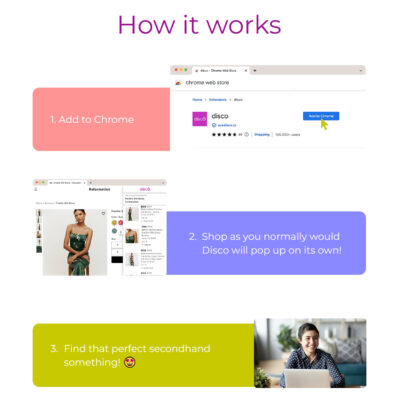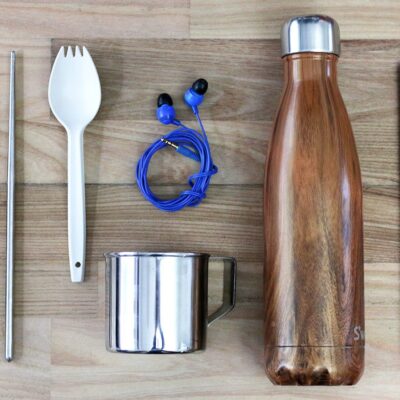Since trying to live more sustainably and consciously I’ve had to re-learn the way I view price and budgets. Before I would go with whatever the lower-priced option was but now I’ve learned that it’s not always actually cheaper.
This post is in collaboration with BuyMeOnce who has an incredible, curated selection of products which have been vetted and researched for their durability and longevity.
When you factor in the longevity and cost-per-use of products, prices start to look very different. For example a relative recently mentioned that they have to replace their non-stick cooking pans about every 3-4 years; they typically pay around $45 CAD for a decent-quality pan. Comparatively we’re looking at investing in a Finex cast-iron skillet (which is recommended by BuyMeOnce). The 12″ size comes to about $265 Canadian which is significantly more, however the skillets also come with a lifetime guarantee (and are ethically made!). If we use the pan for the next 30+ years we’ve paid $265 meanwhile my relative has paid more than $385 replacing their cooking pans and about 8 pans have ended up in the landfill (most non-stick cookware isn’t recyclable). Plus if we look at the greater environmental impact, those 8 pans also used significantly more energy, chemicals, and resources to produce.

Can everyone just drop hundreds on a pan? Definitely not, and it’s a decision we’re really weighing in our budget, however there’s no denying it’s a better “deal” long-term.
I think with investment purchases you have to focus on the areas and items you use most. We really enjoy cooking meals at home and do it basically every day, so cookware is something we prioritise investing in. While someone who doesn’t cook much wouldn’t see the same value in cookware and might want to invest in a different area.
For a less-drastic price point, let’s look at my favourite topic, clothing. I know quite a few people who replace basics, like a black tank, about 3 times a year. Often because the garment has quickly become misshapen, the fabric is wearing out, or the colour has faded, and as I recently experienced poor quality clothing can very quickly deteriorate and become unusable. Now proper clothing care is also extremely important with helping clothing last, however you need good quality fabric and construction to get longevity from your wardrobe.
Comparing a few different fast fashion brands, a basic cotton tank seems to sell for about $6. On the other hand, BuyMeOnce recommends a tank which costs $38. I’ve found a good-quality tee/tank can last at least 3-4 years with proper care. So to break down the cost: for about 3 years the good-quality tank costs $38 but for the person who replaces their tank around 3 times a year they’d need to buy 9 of them which would cost $54. It not only is more money but also a lot more time spent shopping for those tanks. From an eco/ethical perspective the cheap tanks are also a lot more damaging since more resources, energy for both manufacturing and shipping, and labour (likely at unfair wages) went into producing all those shirts, and then there’s all the textile waste after.

It’s important to note though that avoiding heat – washing with cold water and air-drying – drastically increases the life of your clothes because heat breaks down spandex and the fibres very quickly, as well as causes fading. So even with high-quality clothing, you still need to care for them so they can last a long time.

It can mentally be very difficult to pay more for something. As I talk about in my psychology of shopping video, our brains weigh pleasure and pain when it comes to making a purchase – paying more means more “pain”, while feeling like we’re getting a good deal gives us extra dopamine. So intentionally paying more for a product is hard for our brains which is why we need to think of it as a long-term investment.
Money and budgets are always difficult with sustainability because high-quality and consciously made products do often cost more (although you can also find amazing quality products secondhand at very affordable prices). There is a lot of privilege involved in being able to spend more on better quality items, and it’s not something everyone can do. However if you have even a small budget to work with, focus on the areas where you’ll get the most benefit from investing in a better product – these are likely the things you use regularly and/or the items you have to replace most often. Focusing on these areas will give you the greatest impact with your budget and cost-per-use benefit of a better quality product.
I’d love to hear what things are most worth investing in for you!
Be sure to check out BuyMeOnce to find durable and long-lasting products for all areas of your life.
Also you can read more about how to identify good vs. poor quality products.
💚









Jaz
Yes, yes, yes to this! When you’re used to buying things that are cheap but don’t last long, getting used to the up front costs of something well made can be jarring. And good on you for addressing the privilege involved in being able to afford those products. The company that I work for (shout out! http://www.textureclothing.com) really opened my eyes to seeing purchases as investments rather than the mindset of “it’s $5 who cares if it breaks in a week and I have to buy another?” But as I got to talk to our customers who bought our skirts for $78 when they could’ve bought a fast fashion skirt for $10, I realized the $78 really is worth it because some of these folks have had worn their skirts frequently and had them for 5-10 years! If you can afford it, buying things that are sustainably and well made really is a win for everyone.